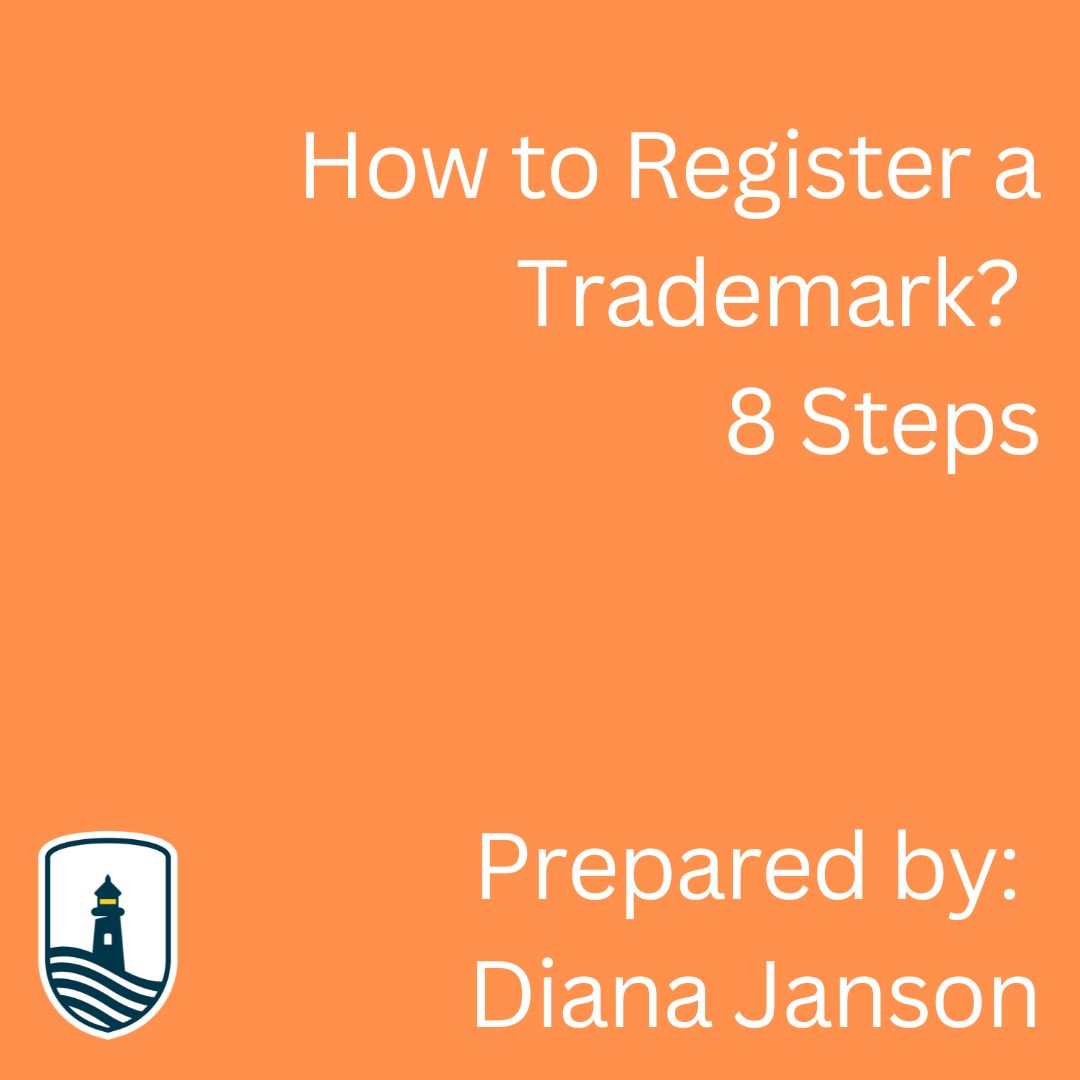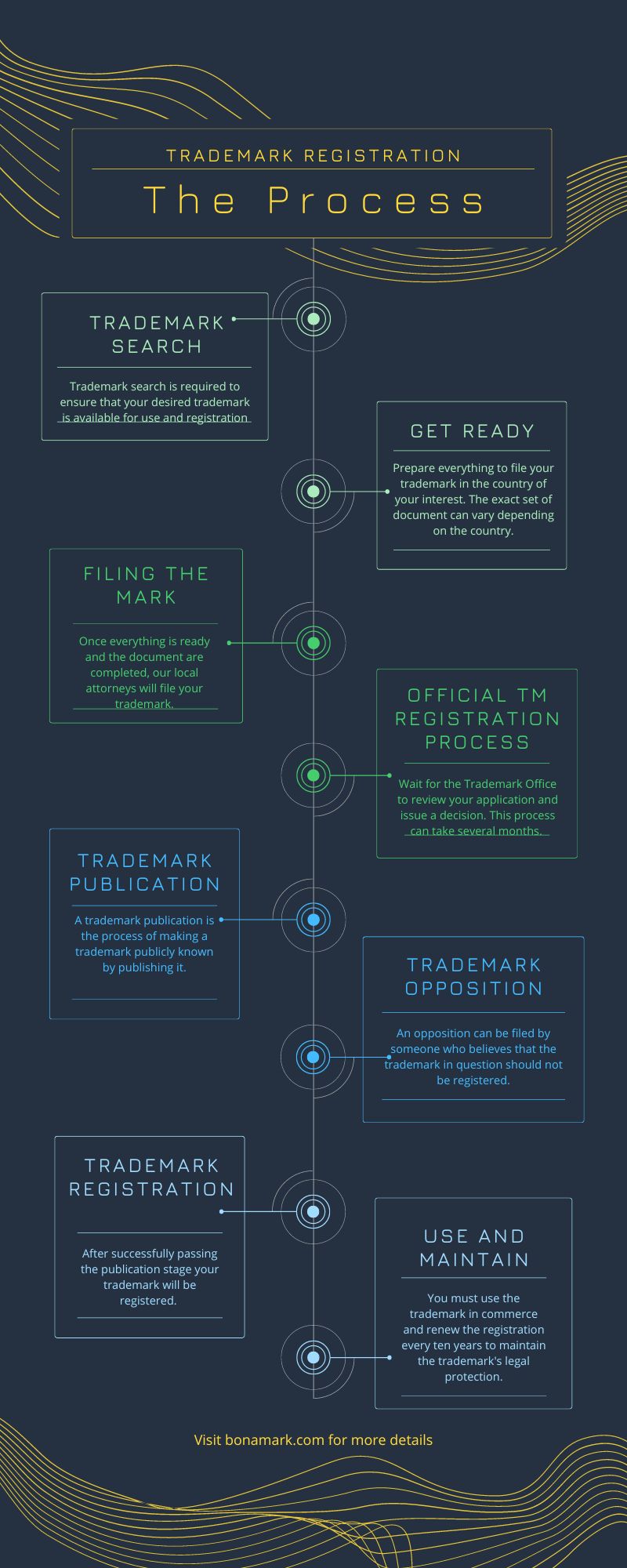How to Register a Trademark? 8 Steps

Step 1: Complete a trademark search or order a trademark study.
Conduct a trademark search to ensure that your desired trademark is available for use and registration. This is an important step in the trademark registration process, as it can help identify potential conflicts and legal issues with the proposed trademark.
A trademark search can be conducted in various ways, such as:
- Not-professional trademark search that you can complete yourself. You can search online databases, such as the United States Patent and Trademark Office (USPTO) database or the European Union Intellectual Property Office (EUIPO) database. These databases contain information on registered trademarks and pending trademark applications. If you are not a trademark agent or attorney it’s likely that you will not be able to perform an accurate search as you will have to find phonetically or visually similar trademarks.
- Ordering a trademark study such as our extensive study. We can help identify potential conflicts and legal issues with the proposed trademark, and can help you make an informed decision about whether to proceed with the trademark registration process. We have the expertise to conduct a comprehensive and thorough search. Also, we will provide the likelihood of success in the registration process.

Step 2: Get ready to filing your trademark
This application will need to include information about the trademark, such as the mark itself, a description of the goods or services it will be used in connection with, and the applicant's contact information.
- Identify the goods and services your trademark will be used in connection with. This will be included in the trademark application and will help us determine the class(es) in which we will file your trademark application.
- Prepare the necessary documentation for your trademark application. The exact list of documents will depend on the country or countries of your interest.
- A clear representation of your trademark (e.g. a logo, word mark, etc.).
- The applicant's contact information, such as name, address, and email.
Step 3: File your trademark application
Once we have received all the details of your application and your payment, we will be ready to file your application. Local attorneys will check the list of goods and services for any mistakes and will make sure that your address is translated into the local language.
A professional attorney will decrease the risk of getting a technical objection due to an error in your application. This will save you time and money in the long run.
Step 4: Official registration process.
Wait for the Trademark Office to review your application and issue a decision. This process can take several months.
Once the mark is filed, there is very little you can do but wait for the Office to examine the trademark. Your mark will be either approved or an objection will be issued. In general, there are two types of objections: substantial and technical objections.
Technical objections mean that something was wrong with your application or with the documents you submitted. There are too many different types and variants to list all of them. The most common ones are problems with your description of goods and services or a Specimen of Use rejection in the USA.
There are several reasons why a substantial trademark objection might be raised, such as:
- The trademark is similar or identical to an existing registered trademark or pending application.
- The trademark is considered descriptive or generic, and therefore not distinctive enough to function as a trademark.
- The trademark is considered immoral, scandalous, or offensive.
Step 5: Publication.
A trademark publication is a process of making a trademark publicly known by publishing it in an official government gazette or journal. This is typically done after a trademark application has been reviewed and approved by the relevant government agency.
The purpose of trademark publication is to give notice to the public that a trademark has been registered and that the registrant has exclusive rights to use the trademark in connection with the goods or services specified in the registration.
If no opposition is filed, or if any opposition is unsuccessful, the trademark registration will be granted and the trademark will be registered.
It's important to note that not all trademarks have to be published, as it depends on the jurisdiction, in some countries, it's mandatory while in others it's not.
Step 6: Trademark Opposition
This happens with only around 15% applications in the EU, but we decided to add this step to inform you of the potential outcomes of your the registration process.
An opposition can be filed by someone who believes that the trademark in question is too similar to an existing trademark, and that its registration would lead to confusion among consumers.
The opposition process allows the parties to present their arguments and evidence to a panel of trademark examiners, who will ultimately decide if the trademark can be registered or not.
This is a complicated process and you would like to avoid it. The best way is to make sure that there are no similar marks by ordering a Trademark Study before you file your trademark application.
Step 7: Registration
Once your trademark is registered, you have several legal benefits, including:
- Exclusive use: The registrant has the exclusive right to use the trademark in connection with the goods and services listed in the registration.
- Legal protection: The registrant can take legal action against others who use the trademark without permission or cause confusion with the registered trademark.
- National priority: The registration provides nationwide priority and protects the trademark against infringement.
- Increased value: A registered trademark can increase the value of a business.
Step 8: Use
It's important to note that the registrant must use the trademark in commerce and renew the registration every ten years to maintain the trademark's legal protection.
If the trademark is in use, you will be required to file additional maintenance documents at specific intervals, such as between the fifth and sixth year after registration, and between the ninth and tenth year after registration.
Summary
Registering a trademark is a process that should be handled by a professional. From start to finish, from searching to sending the certificate there is a place for mistakes. Avoiding such mistakes is part of our job. We are proud to be one of the top providers of online trademark registration.
We offer international trademark registration and second to none prices for the services. Get in touch with Bonamark.com in order to register your trademark.